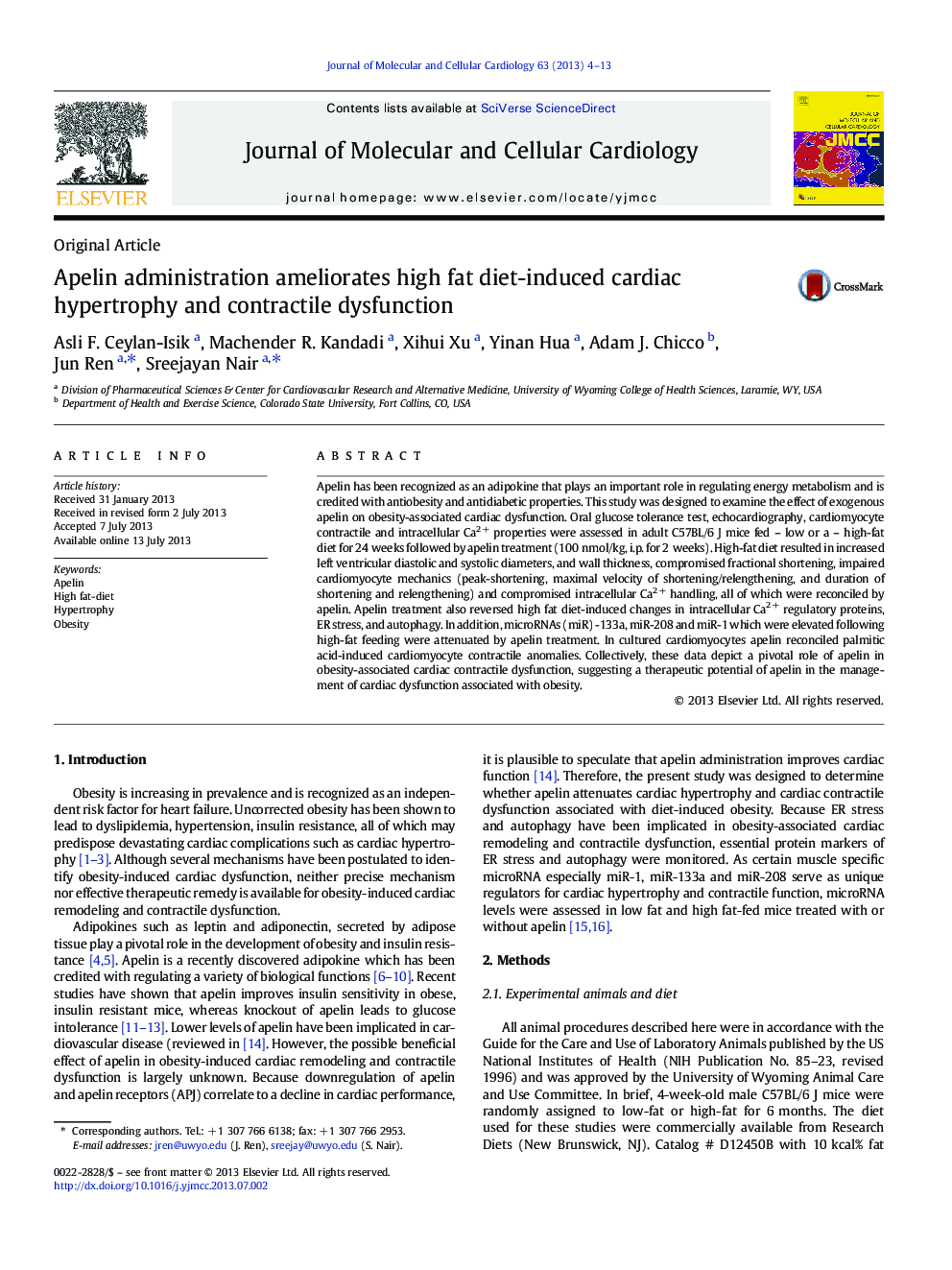| Article ID | Journal | Published Year | Pages | File Type |
|---|---|---|---|---|
| 8475037 | Journal of Molecular and Cellular Cardiology | 2013 | 10 Pages |
Abstract
Apelin has been recognized as an adipokine that plays an important role in regulating energy metabolism and is credited with antiobesity and antidiabetic properties. This study was designed to examine the effect of exogenous apelin on obesity-associated cardiac dysfunction. Oral glucose tolerance test, echocardiography, cardiomyocyte contractile and intracellular Ca2Â + properties were assessed in adult C57BL/6Â J mice fed - low or a - high-fat diet for 24Â weeks followed by apelin treatment (100Â nmol/kg, i.p. for 2Â weeks). High-fat diet resulted in increased left ventricular diastolic and systolic diameters, and wall thickness, compromised fractional shortening, impaired cardiomyocyte mechanics (peak-shortening, maximal velocity of shortening/relengthening, and duration of shortening and relengthening) and compromised intracellular Ca2Â + handling, all of which were reconciled by apelin. Apelin treatment also reversed high fat diet-induced changes in intracellular Ca2Â + regulatory proteins, ER stress, and autophagy. In addition, microRNAs (miR) -133a, miR-208 and miR-1 which were elevated following high-fat feeding were attenuated by apelin treatment. In cultured cardiomyocytes apelin reconciled palmitic acid-induced cardiomyocyte contractile anomalies. Collectively, these data depict a pivotal role of apelin in obesity-associated cardiac contractile dysfunction, suggesting a therapeutic potential of apelin in the management of cardiac dysfunction associated with obesity.
Keywords
Related Topics
Life Sciences
Biochemistry, Genetics and Molecular Biology
Cell Biology
Authors
Asli F. Ceylan-Isik, Machender R. Kandadi, Xihui Xu, Yinan Hua, Adam J. Chicco, Jun Ren, Sreejayan Nair,
